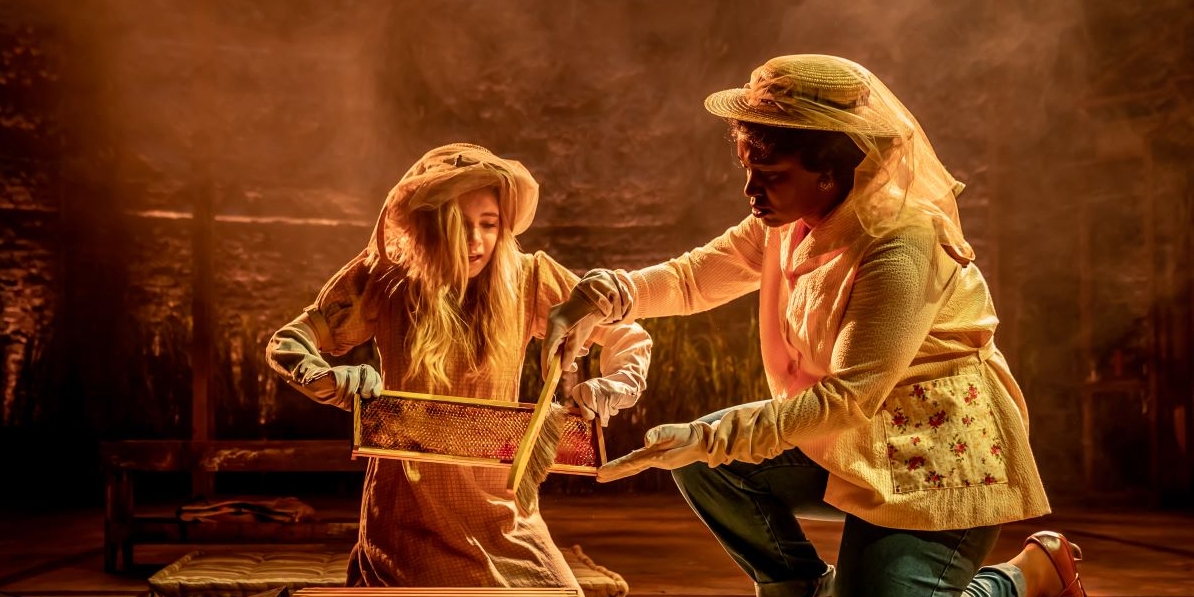‘The Secret Life of Bees’ is a beautiful and moving musical adaptation of Sue Monk Kidd’s novel of the same name. The collaboration of Duncan Sheik, (American Psycho, Spring Awakening) Lynn Nottage (Ruined, MJ: the Musical, Sweat) and Susan Birkenhead (Jelly’s last Jam Triumph of Love), was a perfect match. Their collective styles create a show that challenges and engages the audience in a powerful and emotional way.
The story follows naïve Lilly, played by the talented Olivier winner Eleanor Worthington-Cox, and her maid Rosaleen, played with fire and passion by Abiona Omonua. Set in 1964 South Carolina, the narrative follows the announcement of Lyndon B Johnson’s Civil Rights Bill. Lilly, escaping from her abusive father and Rosaleen, escaping imprisonment, seek refuge at a Black-run honey farm, run by the Boatwrights, where Lilly’s mother once stayed. The story explores inter-race relationships (both platonic and romantic), the Boatwrights’ own trauma and the growing tension, which showcases the central theme of racial conflict. While this theme is always present in the background, it is sometimes side-lined to prioritise Lilly’s story and her relationship with her father. In fact, the show ends with the Boatwrights uniting to save Lilly from him, rather than on the sad note of the progress yet to be made, both then and now. Perhaps this is to demonstrate the importance of unity. The show is filled with hope for change, spelling out the way forward, by giving oneself power through voting and education.
The whole cast is outstanding, and will easily move you to tears, especially in such an intimate theatre like the Almeida. Omouna and Worthington-Cox deliver a poignant and heartfelt performance. Danielle Fiamanya, Rachel John, Ava Brennan as May, August and June give sincere performances and their individual stories are conveyed with nuance. Sheik’s music ranges across different genres, while fitting the emotions portrayed. The set design by Soutra Gilmour is simple yet effective, transporting the audience to 1964’s South Carolina, while Neil Austin’s light design adds both tension as well as emphasising hope.
The musical bends several genre conventions, perhaps due to the development and care given to each character. While this could be initially jarring, it fits the story and the message that the show is portraying. The result is a new and emotive form of musical. The exceptional performances, music and production design create a show that brings light to an important message and reminds us of the injustice which still exists years later.

